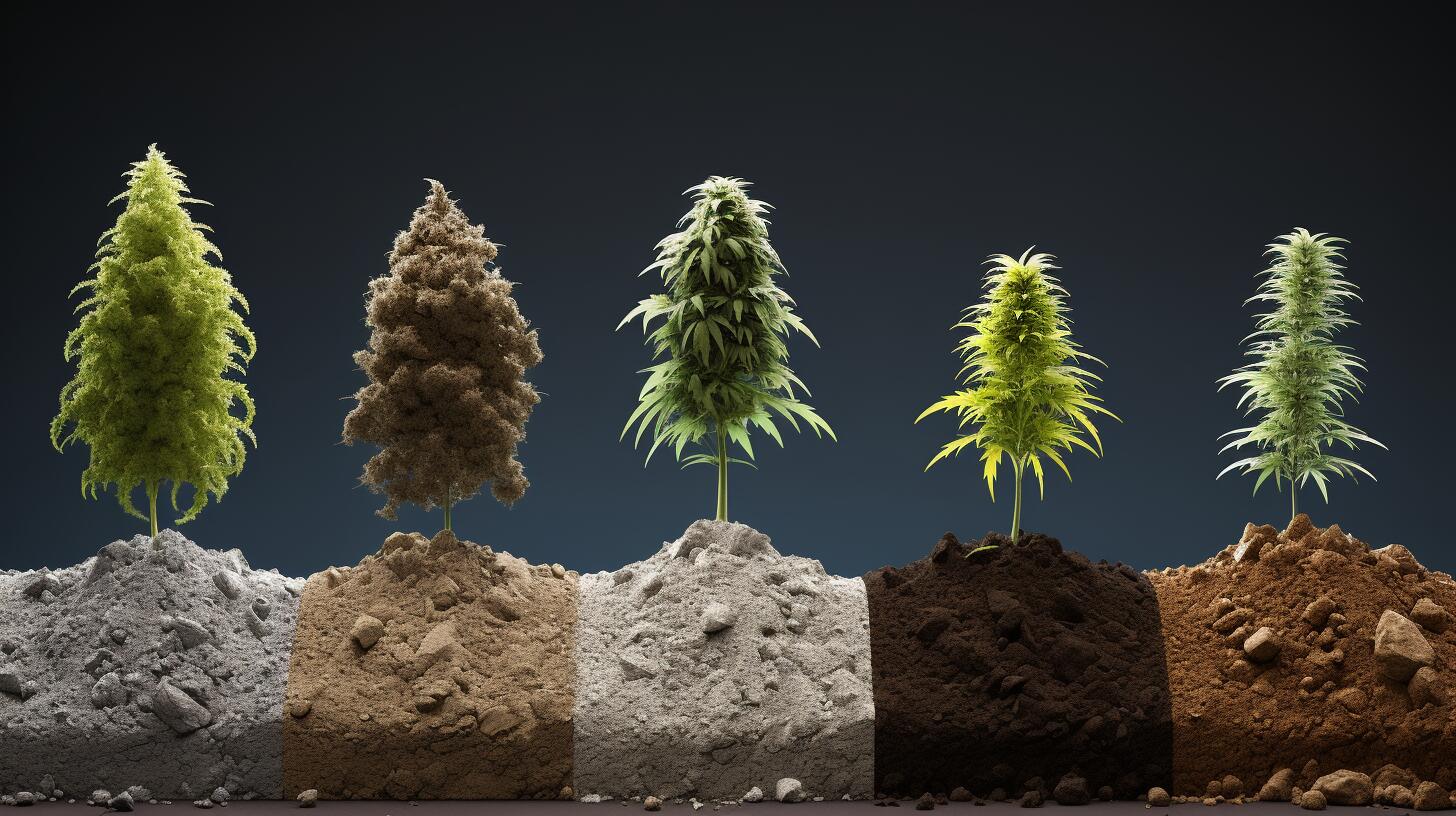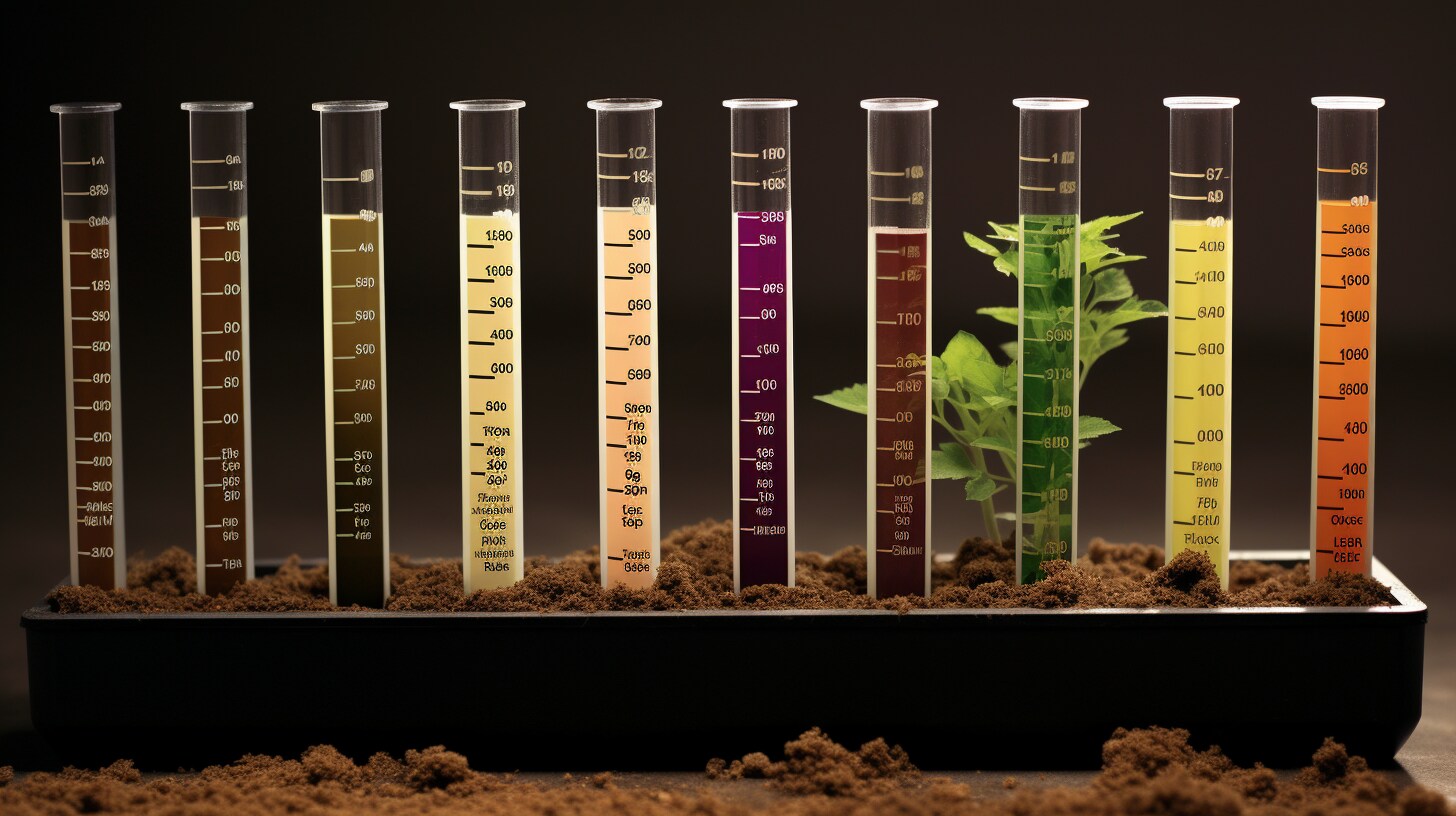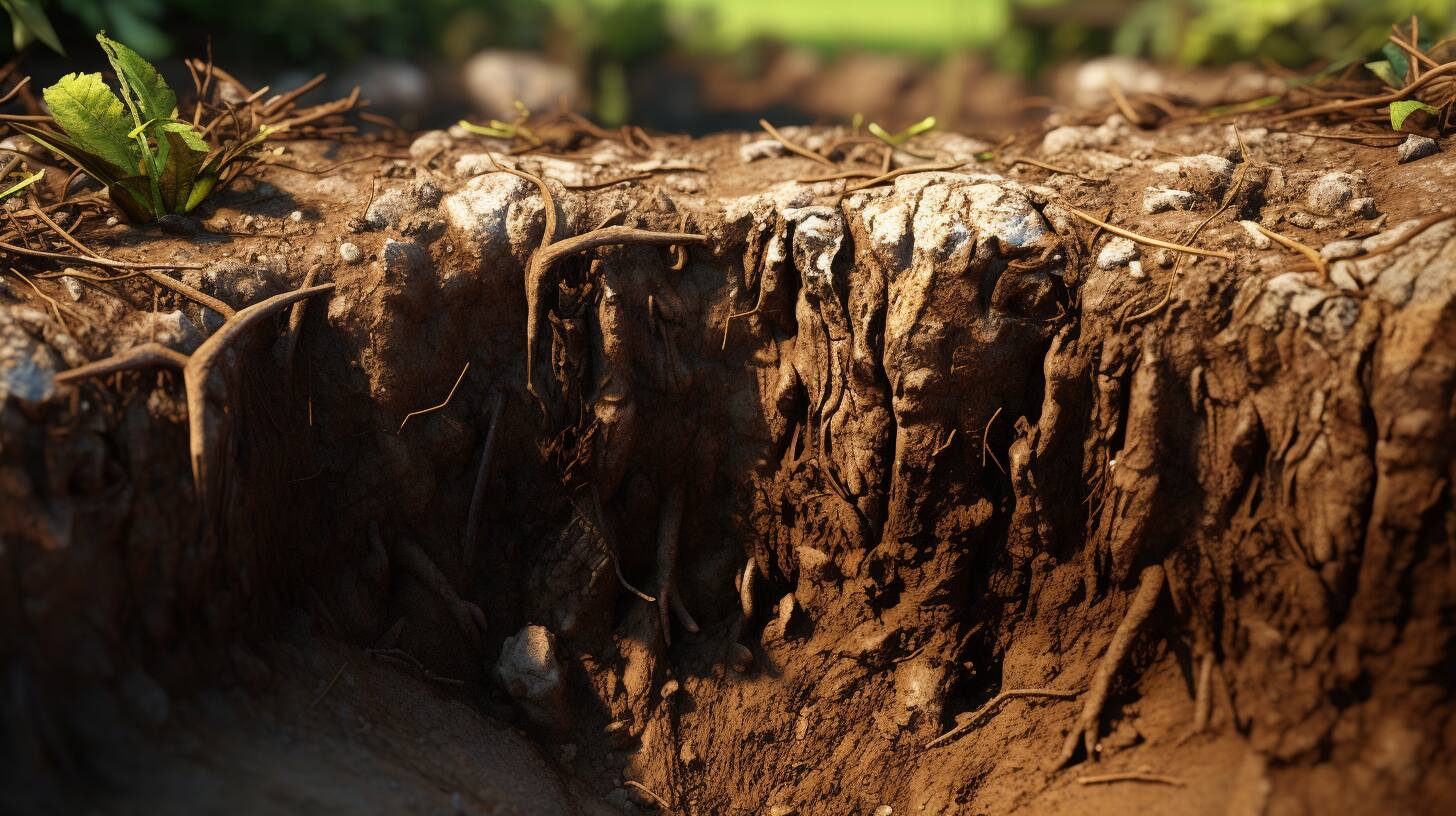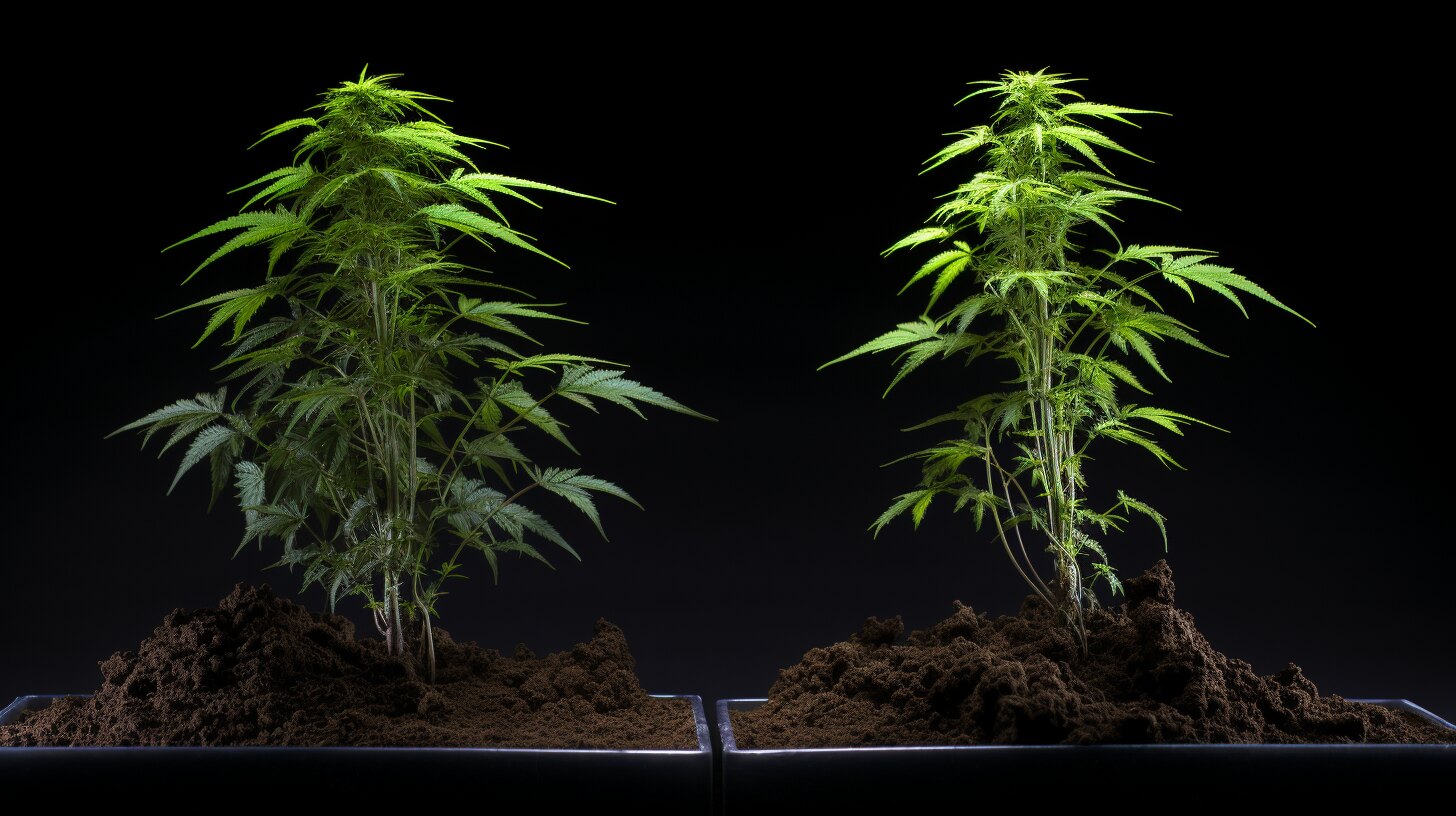Choosing the best soil for cannabis cultivation can feel like a daunting task. Whether you're a seasoned grower or just starting out, understanding how to select the ideal soil that encourages robust plant growth is essential.
Many gardeners face the challenge of finding a mix that has just the right balance of drainage, water retention, and nutrient content necessary for their cannabis plants to thrive.
Did you know that the best cannabis soil should resemble a rich, dark earth filled with life? This kind of soil supports healthy root development and provides your plants with all they need during their growth cycle.
Our guide will walk you through every consideration—whether you’re planting indoors or outdoors—to help ensure your cannabis grows to its full potential.
This article is packed with tips on tailoring your soil's texture and composition so it's perfect for your green friends. From organic options to store-bought solutions, we'll cover everything needed to nurture top-quality cannabis.
Types of Soil for Growing Cannabis
Navigating the terrain of cannabis cultivation begins with understanding the foundation—literally. The soil you choose is a pivotal decision that can steer your plants toward lush growth or leave them languishing; it's not merely about picking dirt off the shelf but knowing which type will best usher your cannabis through its lifecycle.
Sandy
Growing cannabis in sandy soil can be tricky, but it's not impossible. This type of soil is loose with big particles. Water runs through it fast, which means plants don't drown. But watch out – this speedy drainage also means water and nutrients can wash away before roots grab them.
To make sandy soil better for your cannabis, mix in some organic matter or compost. This boosts the nutrients and helps keep water in the soil longer. Adding perlite makes a big difference, too; it helps air flow and holds onto moisture so your plants stay happy.
Just remember to check on your plants more often—you might need to water them more than usual since sandy soil dries out quickly!
Silty
Moving from sandy soils, silty soil is also a good choice for cannabis plants. It's kind of like loamy soil because it holds onto water well and has good drainage, too. This soil feels smooth and can hold more nutrients that help the plants grow strong.
A mix with 40% silt works great because it keeps the soil loose enough for the roots to spread out. Silt has tiny minerals in it that feed your cannabis plants just what they need.
Plus, this type of soil makes sure air moves around, which helps roots breathe more easily.
Clay
Clay soil grabs onto water but can get too tight, making it hard for air to move. This can stop roots from getting the air they need. The soil's heaviness helps plants hold water longer, which is good for cannabis in hot places or during dry times.
But if clay gets too packed down, roots struggle and can't spread out to suck up food. Gardeners who use clay must make sure their plants have enough room to breathe and eat.
To keep your cannabis happy in clay, mix in stuff that makes space and helps drain water. Materials like compost or bark break up heavy clay, so roots find it easier to grow. With these tweaks, you turn dense dirt into a cozy home for your plants where they can both drink well and breathe easily.
Loamy
Loamy soil hits the sweet spot for growing cannabis. It has just the right mix of silt, clay, and sand. This kind of soil feels soft and crumbly, which lets roots grow deep and strong. The balance in loamy soil means water drains well but not too fast – your plants won't get thirsty quickly.
Imagine a cake that's moist but not soggy; that's like loamy soil for cannabis plants. It holds nutrients well so your plants can feed as they need to. Since it’s already great stuff, you don't have to work hard to make it better for your plants! Gardeners love using loamy soil because it makes their job easier and helps them grow some top-notch cannabis.
Read More: Everything You Need To Know About Growing Weed in a Tent
Key Traits for Quality Cannabis Soil
Unlocking the full potential of your cannabis plants hinges on finding soil with just the right balance—discover what makes soil go from good to great for optimal growth and yield.
Texture
Getting the texture right is super important for healthy cannabis plants. Loamy soil is your best friend here—it's like a special blend of sand, silt, and clay. This mix makes sure roots can breathe, and water flows through just enough, keeping them happy without drowning them.
Think about grabbing a handful of top-notch potting soil; it should feel light and airy but still hold together when you give it a gentle squeeze.
Now, let’s talk about making that texture even better. Add some earthworm castings into the mix to get that perfect balance. It helps with draining excess water while still keeping moisture where your plants need it most.
A dark, rich look means you've got lots of organic goodness in there to feed your greens while letting air flow freely around their roots—crucial stuff for top-tier buds!
Read More: How To Plant Cannabis Seeds
Water Drainage
Water drainage is super important for your cannabis plants to stay healthy. If the soil holds too much water, your plants could get root rot. You want soil that lets extra water flow away while keeping the right amount for the plants.
Use pots and soils that help this happen.
Pick a soil with a loose texture that drains well but still holds onto some moisture. Add stuff like perlite to improve how it drains. This keeps your cannabis happy by making sure its roots have enough air and aren't swimming in water.
Good drainage makes for strong, healthy plant growth!
Water Retention
Good soil for growing cannabis keeps the right amount of water. It holds onto moisture so roots can drink it, but it also needs to let extra water drain out. Loamy soil is best because it does this well.
It has a balance—it's like a sponge that holds enough water for the plant but squeezes out what's not needed.
Think about how the soil feels and works together. Cannabis likes its roots comfy and moist, not swimming or dry. The mix should have tiny spaces—pores—that hold air and water.
If your soil drains too fast, plants might get thirsty; if it's slow, they could drown or get sick from too much water. Aim for hydration balance in your cannabis garden – just right watering leads to happy plants!
Acidity
Acidity in soil is like a secret code for your cannabis plants. They need it just right—not too sour, not too bland. Think of it as the Goldilocks zone where your plants feel at home, between pH 6.0 and 7.0.
Get this balance spot on, and you give your marijuana plants the keys to take up nutrients effectively.
Mess with this delicate pH level, and you might find yourself with unhappy plants that won't share their best yield. It's essential to check the acidity often because even a small shift can affect plant growth big time.
Stick within that sweet, slightly acidic range, and watch your cannabis thrive!
Nutrients
Cannabis plants love to eat! They need the right food for strong growth. This means the soil must have Nitrogen, Phosphorus, and Potassium. These are the main meals for your cannabis plants.
But that's not all—they also want snacks! Calcium, magnesium, sulfur, and iron are smaller nutrients they crave.
Make sure your soil has plenty of organic matter like compost or peat. This stuff acts like a slow buffet, giving nutrients slowly over time so your plants can eat whenever they're hungry.
Read More: How To Use Molasses To Grow Cannabis
Improving Soil Quality for Cannabis Growth
To unlock the full potential of your cannabis plants, delve into advanced strategies for enhancing soil quality – a crucial but often overlooked cornerstone of vigorous growth and bountiful yields.
Amendments to Enhance Soil Quality
Good soil makes happy plants. For cannabis growers, improving soil means healthier crops and better yields.
- Mix in organic fertilizers for a nutrient boost. Things like compost, manure, or worm castings feed your plants naturally.
- Add perlite or vermiculite to help with water drainage. This stops the roots from sitting in too much water.
- Use coco coir or peat moss to keep moisture in the soil. They help the soil hold onto water so plants don't get thirsty too fast.
- Stir bone meal into your soil for strong roots. It is full of phosphorus, which helps roots grow deep and sturdy.
- Sprinkle in some blood meal for more green growth. It's high in nitrogen, perfect for leafy parts of your plant.
- Incorporate lime if you need less acid in your soil. Lime can make the earth less sour so that your cannabis can take up nutrients better.
- Mix wood ash sparingly when you want potassium. A bit of wood ash gives potassium, which helps in the flowering stage and bud growth.
- Put mycorrhizae fungi into your mix to buddy up with roots. These fungi attach to roots and help them suck up food and water better.
- Spread kelp meal to sprinkle a taste of ocean goodness. Kelp has minerals that help the overall health of cannabis plants.
Using Perlite in Soil Mix
Perlite helps make your cannabis soil better. This light and airy stuff mixes right in with your dirt. It creates tiny holes that let roots breathe, and water flow out easily. Your plants will be happier because their roots won't sit in wet soil for too long, which can cause rot.
Mixing perlite into your soil also makes the texture nicer for growing cannabis. Think of it like adding little sponges to hold the right amount of water while letting extra moisture drain away fast.
Perlite is a top pick among growers because it does such a great job at keeping the balance just right for healthy cannabis plants to flourish.
Techniques for Soil Moisture Management
Managing soil moisture is vital for growing cannabis. Here are ways to keep the right amount of water in your soil:
- Check your soil often. Stick your finger a couple of inches deep to feel how wet it is.
- Use a soil moisture meter. These tools tell you if your plants need water.
- Mix in perlite or vermiculite to the soil. This lets extra water drain away but keeps enough for the plants.
- Spread mulch on top of the soil. It keeps moisture in and stops it from evaporating quickly.
- Water when the lights are on if you grow indoors. Plants drink more when they're making food with light.
- Lift pots to judge their weight. A lighter pot usually needs watering, while a heavy one suggests there's plenty of water inside.
- Try "bottom watering." Place pots in a tray with water so plants drink from below.
- Make small ditches around plants outside. They catch rainwater and give time for roots to soak it up.
Read More: How To Germinate Cannabis Seeds
Comparison of Organic and Inorganic Soils for Cannabis
The debate between organic and inorganic soils is central to this choice, with each type offering its unique benefits and drawbacks.
| Organic Soils | Inorganic Soils |
| They're naturally composed of peat, worm castings, compost, and forest humus, teeming with beneficial microorganisms that aid in root development and nutrient uptake. | Inorganic options are often more sterile, which means they can be less prone to pests and diseases that thrive in organic matter. |
| Nutrient release in organic soils is slow and steady, mirroring the natural growth cycle of cannabis, which prevents nutrient burn and encourages robust plant health. | They provide immediate nutrient availability, giving growers precise control over feeding schedules and plant growth rates. |
| These soils enhance the flavor profile of cannabis, as the complex interaction between organic compounds and plant roots contributes to terpene development. | Such soils typically require more frequent fertilization as they do not contain the same nutrient-rich organic matter found in their organic counterparts. |
| Organic matter in the soil improves its structure over time, resulting in better aeration and water retention capabilities. | Water drainage is usually more efficient in inorganic soils, reducing the risk of overwatering and root rot — a common issue in denser, organic mediums. |
| They require less frequent fertilization since the nutrients are already present within the organic matter, reducing additional input costs over time. | The lack of microbial life means there's no natural breakdown of organic matter into nutrients, potentially leading to a less complex flavor profile in the final product. |
| However, organic soils can vary in quality and may need additional amendments to achieve the optimal balance for cannabis growth. | Inorganic soils may contain mineral salts and other chemical residues that can accumulate over time, potentially harming the cannabis plants if not managed properly. |
The Best Commercial Potting Soils for Cannabis
You want the best soil for your cannabis plants. The right mix helps them grow strong and healthy.
- Look for soils with a balance of peat, coir, perlite, and dolomitic lime. This mix offers great water retention and drainage.
- Optimal cannabis soils are 60% sphagnum peat moss. Peat helps hold moisture and air.
- They include 30% coir. Coir, made from coconut husks, supports root growth and retains water well.
- Good mixes also have 10% perlite. Perlite makes soils lighter, so roots get more oxygen.
- Adding dolomitic lime adjusts soil pH. It provides calcium and magnesium, too.
- Many top potting soils come with composted forest humus. This adds nutrients for your plants to eat.
- Sandy loam in the mix ensures your soil drains well without drying out fast.
- Choose nutrient-rich options. Your plants need lots of food to grow big buds.
- Aim for organic blends when possible. These give your plants natural food sources.
- Some soils are ready to use from the bag – great if you're new or busy.
Creating an Optimal Soil Mix for Cannabis
Making the perfect soil mix for cannabis is key to growing healthy plants. Getting the right blend will support your plant through all its growth stages.
- Start with peat, which should make up half of your base; it helps the soil stay moist and breathable.
- Add compost to supply organic matter that feeds the plants as they grow.
- Mix in perlite or vermiculite to improve drainage — they keep roots from getting too wet.
- A balanced nutrient mix is vital; aim for an NPK ratio of 3:1:1 during vegetative growth.
- Adjust soil pH to be slightly acidic, between 6.0 and 7.0, which is ideal for cannabis absorption of nutrients.
- Introduce earthworm castings to increase fertility; they're packed with helpful microbes.
- For texture, a loamy balance of sand, silt, and clay gives roots the best environment.
- Consider mature plants when adding super soil — its powerful nutrients are excellent but can overwhelm young seedlings.
- Soil amendments like bone meal or bat guano might be needed for additional nutrients as plants get bigger.
- Monitor moisture levels closely and tweak your mixture if the water seems to pool or drain away too quickly.
Unique Soil Considerations for Autoflowering Cannabis
Autoflowering cannabis seeds grow fast and don't need as much time to bud. This means they can't sit in heavy soil that holds too much water. A mix with good drainage, like one with compost, peat moss, and perlite, helps roots breathe and water flow through.
These plants are small but tough—they get by with fewer nutrients early on because they spend less time growing leaves before they start making buds.
Growers often choose soilless mixes or organic soil for autoflower. These blends support the quick growth cycle without drowning or starving the young plants. Soilless options keep moisture just right and usually have enough food to get autos started right after planting seeds.
Since autos go from seed to harvest quicker than regular strains, picking the correct soil is a big deal for healthy plants and solid yields.
Read More: When To Harvest Autoflower Strains
Conclusion
Picking the best soil for your cannabis plants is a big deal. With the right mix, your plants will grow strong and healthy. Remember, look for dark, rich soil that keeps water well but also drains nicely.
Make sure it has all the essential nutrients your plants need. Happy growing!
FAQs
What type of soil is best for growing cannabis?
Loamy soil is great for cannabis because it drains well and has good nutrient-holding capacity.
Can I just use regular garden soil for my cannabis plants?
Regular garden soil might not have the right mix of essential nutrients; look for soil that's designed for cannabis growth.
How often should I change the soil in my cannabis plant containers?
Change your potting soil once each grow cycle to give your plants fresh nutrients.
Do I need to test the pH level of my cannabis soil?
Yes, you should check that the pH level is between 6 and 7 to help your plants grow healthy.
Is it important to choose organic soil for my cannabis plants?
Organic soils can nourish your plants without harsh chemicals and are often preferred by growers.


 Français
Français 





